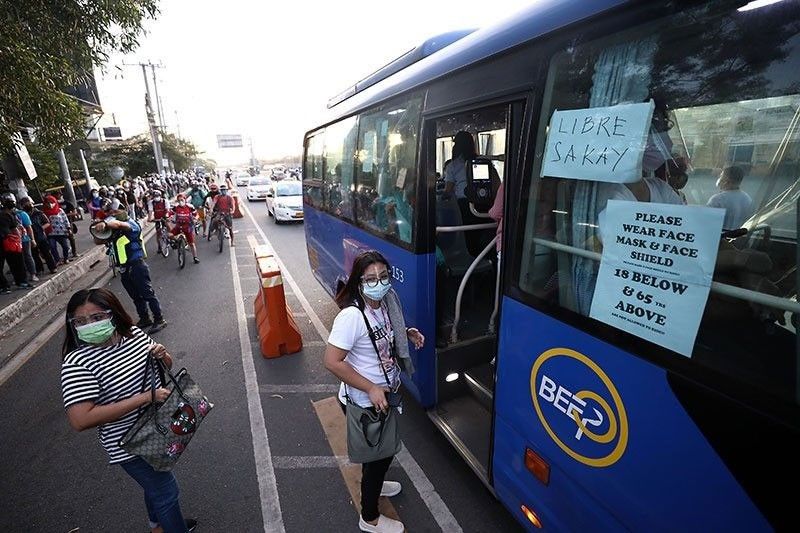Why Choose Transit Advertising Philippines for Your Brand
Why Choose Transit Advertising Philippines for Your Brand
Blog Article
A Thorough Assessment of the Strategies and Methods for Effective Transit Advertising Campaigns
Transit marketing campaign offer an unique opportunity for brand names to engage with diverse target markets in vibrant atmospheres. To attain success, it is vital to recognize the subtleties of target demographics, apply cutting-edge layout techniques, and select optimal placement locations. Furthermore, the effectiveness of these projects can be substantially improved by carefully checking efficiency metrics and adjusting methods as necessary. As we discover these critical components, it ends up being clear that the path to an impactful transportation advertising and marketing strategy is both rewarding and detailed, increasing the question of just how finest to navigate these complexities for maximum brand name exposure.
Comprehending Target Demographics
Understanding target demographics is crucial for the success of transportation ad campaign (Transit Advertising Philippines). Identifying certain audience sections makes it possible for advertisers to customize their messages effectively, making sure that the web content resonates with the designated viewers. This method boosts engagement and maximizes roi
To effectively examine target demographics, online marketers need to consider a number of key elements, consisting of age, income way of life, occupation, and level preferences. For instance, a campaign focused on young experts might concentrate on ease and modernity, while one targeting family members might emphasize security and reliability. Moreover, geographical aspects such as rural versus urban setups can dramatically influence customer behavior and choices.
Information collection methods such as surveys, emphasis teams, and social media analytics provide valuable insights right into group fads and customer practices. By leveraging this information, advertisers can craft engaging stories that line up with the values and needs of their target market.
Inevitably, recognizing target demographics not just notifies the tactical direction of transportation marketing campaigns but additionally ensures that sources are designated effectively. This targeted method increases the likelihood of attaining project goals, cultivating brand name loyalty, and driving conversions.
Imaginative Style Methods
Effective interaction with target demographics relies heavily on cutting-edge imaginative design strategies en route ad campaign. To effectively record interest in a crowded aesthetic atmosphere, designers have to focus on clarity and aesthetic effect. Making use of high-contrast aspects and vibrant colors can improve exposure, making certain that messages are conveniently clear from a range.
Including dynamic images that reverberates with the target audience is critical. Visual storytelling strategies can stimulate emotions and create unforgettable organizations with the brand name. Furthermore, calculated use typography helps communicate necessary information rapidly; proper dimensions and legible font styles additionally boost readability.
Incorporating interactive aspects, such as QR codes or enhanced fact functions, can engage commuters beyond passive observation (Transit Advertising Philippines). These techniques not only promote individual interaction however likewise connect the space between standard advertising and marketing and electronic involvement
In addition, utilizing space creatively-- whether on bus wraps, transportation sanctuaries, or subway advertisements-- can result in cutting-edge designs that break the mold of conventional advertising. By accepting imaginative creative thinking while keeping brand name consistency, campaigns can foster a solid link with their audience, ultimately driving both awareness and activity. The combination of these style methods is critical for attaining successful transit advertising end results.
Strategic Placement Methods
Maximizing the influence of transit advertising pivots on you can try this out critical placement methods that make certain ideal visibility and involvement. Efficient positioning includes comprehending and analyzing high-traffic locations passenger demographics to recognize the most advantageous places for ad display screens. As an example, placing ads near entryways and departures of transit automobiles can capture the focus of boarding and alighting travelers, thus improving exposure.
Additionally, utilizing both outside and indoor surface areas of transportation automobiles can dramatically expand reach. Exterior ads, noticeable during commutes, involve pedestrians and various other chauffeurs, while interior advertisements target guests in a captive atmosphere. Furthermore, placing ads in transit centers, such as bus terminals or train terminals, allows for boosted perceptions as commuters change in between different modes of transport.
Timing is likewise vital; straightening the project launch with peak traveling durations takes full advantage of audience involvement - Transit Advertising Philippines. In addition, leveraging digital displays in transportation settings can assist in vibrant material, enhancing and giving real-time updates individual interaction. By utilizing these critical placement techniques, marketing professionals can make sure that their transit advertising and marketing projects accomplish maximum presence, reverberate with the target market, and eventually drive desired outcomes

Determining Project Performance
To assess the success of transportation marketing campaign, it is important to use a variety of measurement strategies that supply understandings right into audience involvement and total performance. One key method is the usage of vital performance signs (KPIs), such as reach, perceptions, and involvement rates, which quantify the number of individuals checked out the promotion and interacted with it.
Surveys and emphasis teams can likewise be critical in determining consumer perceptions and recall, enabling online marketers to comprehend the influence of their messaging. Furthermore, tracking web site traffic and social networks interaction during and after the project helps gauge straight feedbacks to the advertising.
One more reliable method is making use of location-based analytics, which can provide data walking web traffic around specific transit areas, using insights right into whether the project efficiently captured the Related Site attention of travelers. Additionally, examining sales information can expose correlations between transit advertising and marketing and boosted income, offering tangible evidence of a campaign's performance.
Study of Success
Understanding the effectiveness of transportation advertising campaigns with dimension techniques lays the groundwork for checking out real-world instances that illustrate successful end results. By employing geo-targeted electronic advertisements and analytics, the brand gauged a 30% increase in sales in areas where the wraps were plainly presented, demonstrating the direct effect of transit advertising.
Another engaging example comes from a neighborhood nonprofit company that launched a campaign on train platforms to promote a community event. The company integrated vivid visuals with QR codes directing commuters to an enrollment web page. Post-campaign evaluation exposed a 50% boost in event attendance compared to the previous year. The use of direct interaction through innovation amplified the project's reach and performance.

Conclusion
In recap, effective transportation advertising campaigns require a comprehensive technique that incorporates an understanding of target demographics, ingenious design methods, and tactical positioning. Collectively, these methods foster brand name existence and optimize the return on financial investment in transportation advertising efforts.
Recognizing target demographics is important for the success of transportation marketing projects.Reliable interaction with target demographics relies heavily on ingenious imaginative design methods in transportation marketing campaigns. By utilizing these strategic positioning approaches, online marketers can ensure that their transportation marketing campaigns achieve maximum presence, reverberate with the target audience, and inevitably drive wanted end results.
Recognizing the effectiveness of transit marketing campaigns via dimension techniques lays the groundwork for taking a look at real-world instances that show successful end results.In summary, successful transportation advertising projects necessitate a detailed strategy that incorporates an understanding of target demographics, ingenious design strategies, and tactical placement.
Report this page